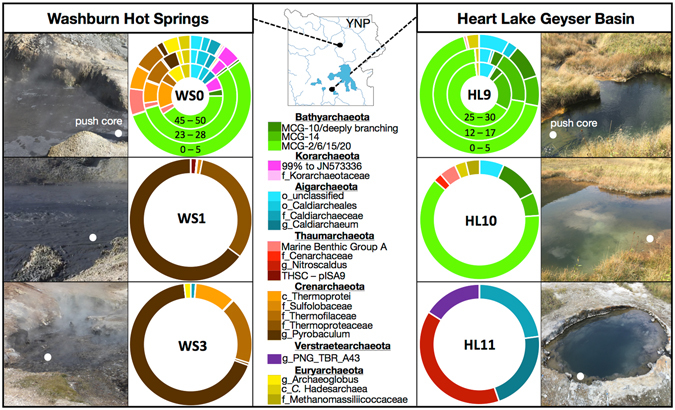Figure 1.

16S rRNA gene diversity of Archaea in physicochemically and regionally distinct Yellowstone hot spring sediments. Taxonomic groupings of archaeal OTUs representing >0.1% of the sequences recovered from Washburn Hot Springs (WS) and Heart Lake Geyser Basin (HL). At one spring from each region—WS0 and HL9—a sediment push core was sectioned in three layers for separate microbial analysis, and the sediment depth in cm is labeled on each respective section of the circle chart with the deepest section closest to the center. Photographs of each hot spring are adjacent to diversity charts, and white circles indicate the location of sampling. Taxonomy is grouped by phylum and the next highest resolution taxonomic group possible is listed beneath the phylum as a separate color (c = class; o = order; f = family; g = genus). For Bathyarchaeota, MCG subgroups are listed according to classifications by Kubo and Lloyd et al. (2012) and Lazar et al. (2015), except for MCG-20, which is proposed in this study (Supplementary Figure S1). The map in this figure was obtained from the public domain national park maps available from the US National Park Service (https://www.nps.gov/hfc/carto/PDF/YELLmap2.pdf; licensing: https://www.nps.gov/hfc/carto/data-sources.cfm) and simplified with Adobe Illustrator CC 2015 (Adobe Systems; www.adobe.com/illustrator).
